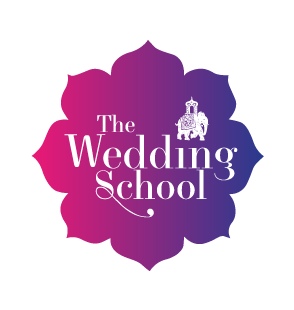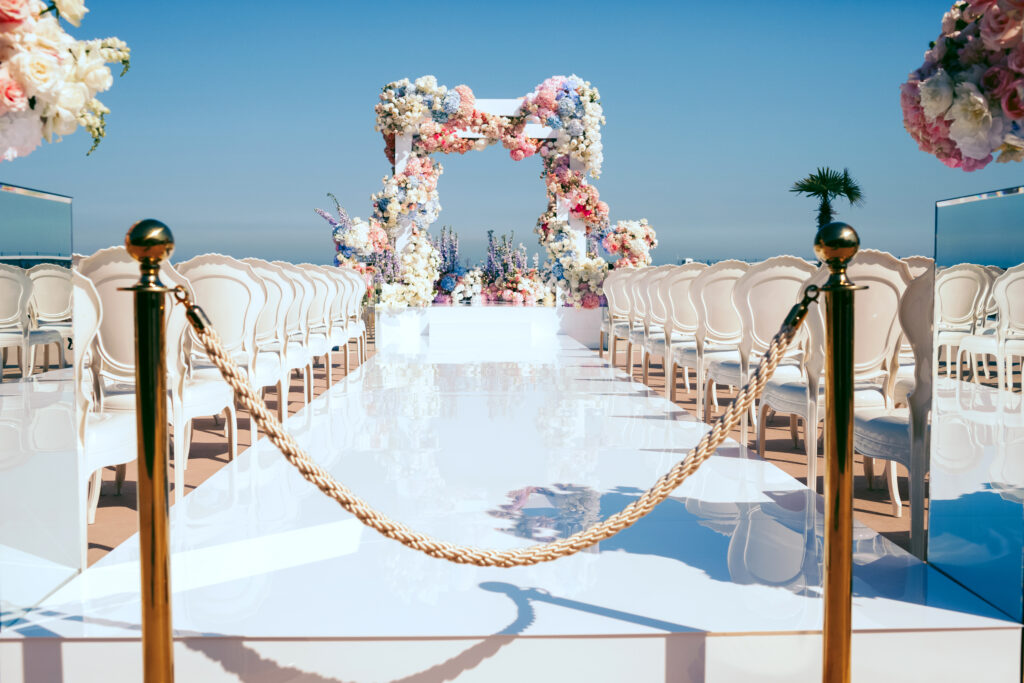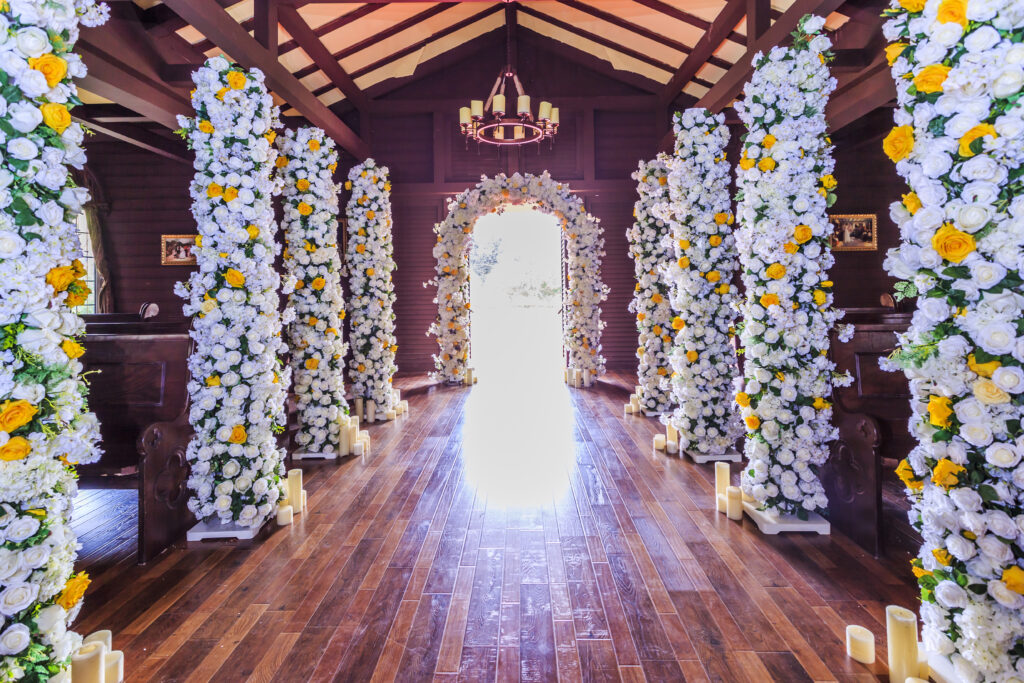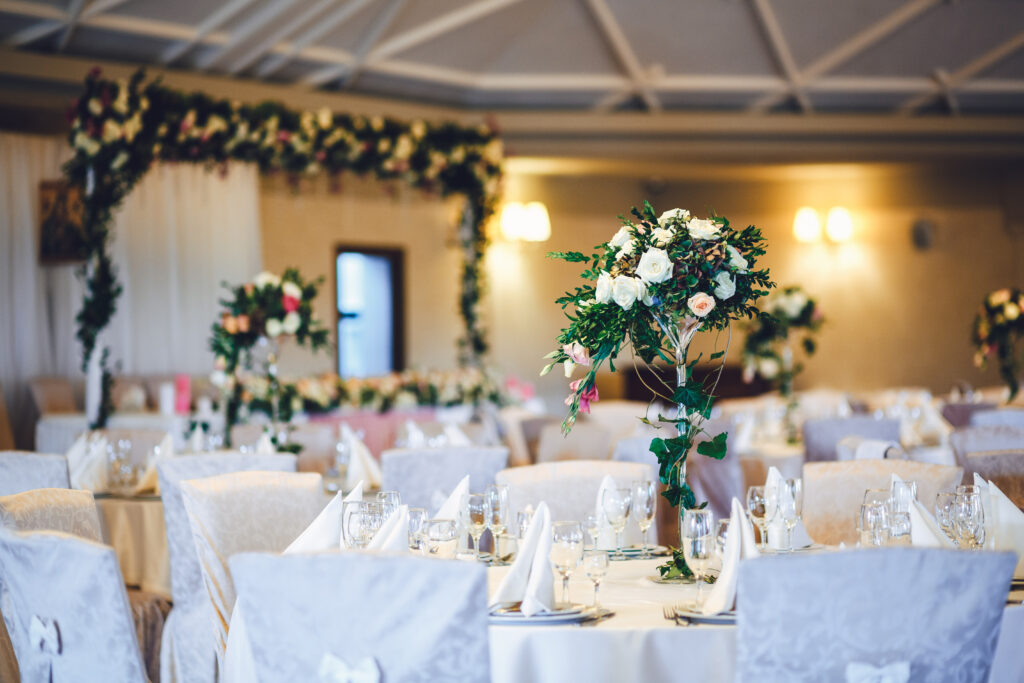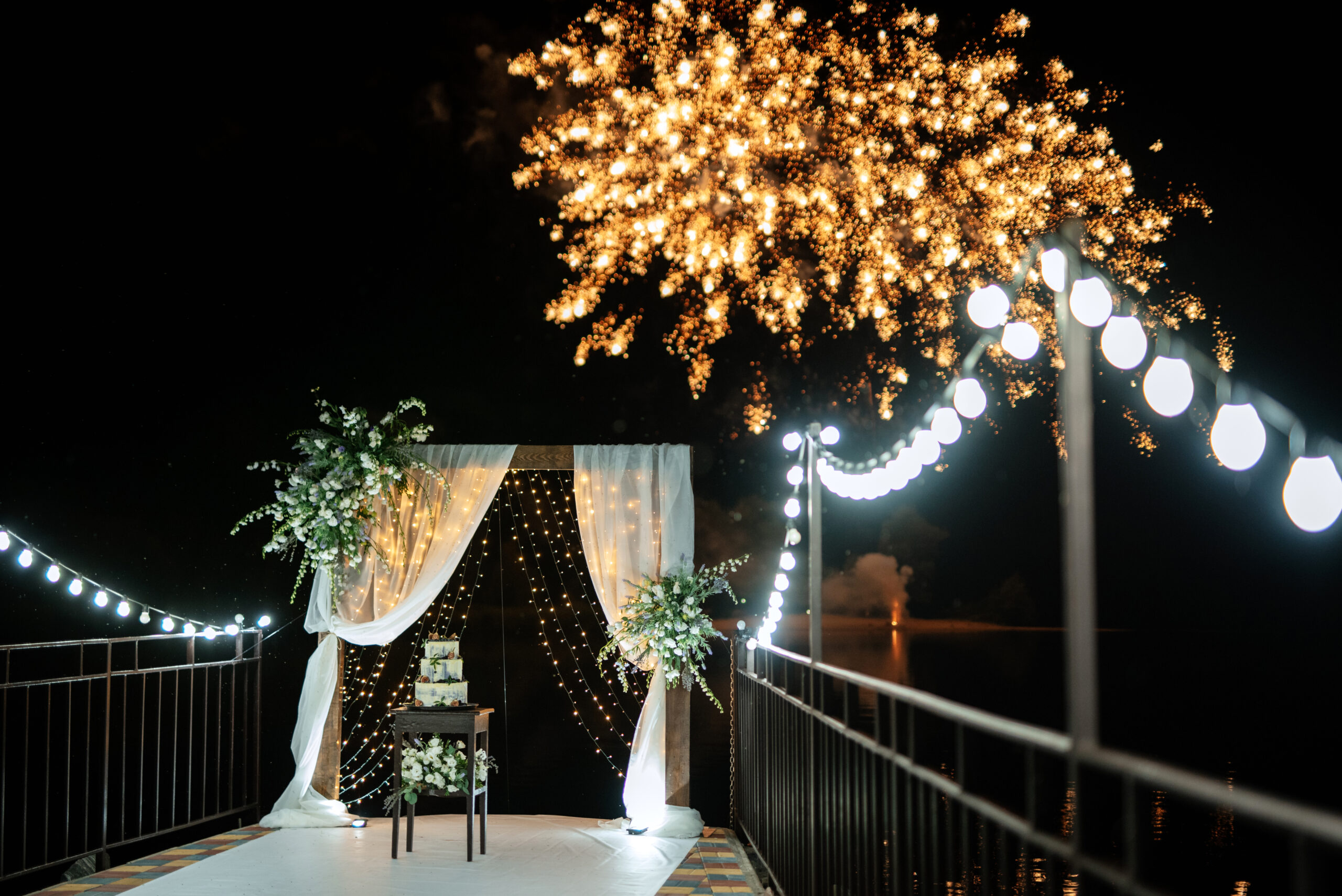Want to build your career as a wedding planner
Planning a wedding involves making countless decisions, and one of the most significant choices you’ll need to make is selecting a wedding photographer. Your wedding photographs will serve as a visual narrative of your special day, ensuring that your memories are beautifully preserved for years to come.
To help you navigate the process and find the perfect photographer, this guide will walk you through the key considerations and factors to keep in mind.
Understanding the Importance of a Wedding Photographer
Weddings are a celebration of love, and capturing the essence of your love story is paramount. A skilled wedding photographer has the ability to document the emotions, interactions, and intricate details of your wedding day, creating a timeless and personalized visual story.
When you look back on your wedding day, you want to be transported back to that moment, reliving the joy and excitement you felt. A wedding photographer plays a crucial role in preserving those memories, ensuring that every precious detail is captured.
Capturing Your Love Story
Wedding photographers are adept at capturing those heartfelt moments and genuine expressions of love between you and your partner. Whether it’s the excitement leading up to the ceremony, the tears of joy during the exchange of vows, or the elation of the first dance, a skilled wedding photographer will freeze these precious moments in time through their lens.
Imagine looking through your wedding album years from now and being able to vividly remember the emotions you felt on that day. The laughter, the tears, the overwhelming happiness – all beautifully preserved in photographs that tell your unique love story.
The Role of a Photographer in a Wedding
A wedding photographer serves as an active participant in your special day. They go beyond simply taking photographs; they become a trusted observer, capturing candid moments and meticulously composing shots that showcase the emotions, beauty, and joy of your wedding.
From the early morning preparations to the late-night celebrations, a wedding photographer is there to document every aspect of your day. They have an eye for detail, capturing the intricate elements that make your wedding unique – from the delicate lace on your wedding dress to the carefully arranged floral centerpieces.
Not only do they capture the big moments, but they also focus on the small, intimate moments that often go unnoticed. The stolen glances, the gentle touch of your partner’s hand, the laughter shared between friends and family – all these moments are carefully documented, creating a comprehensive visual narrative of your wedding day.
Moreover, a skilled wedding photographer knows how to adapt to different lighting conditions and environments. Whether your wedding takes place outdoors in the golden hour or in a dimly lit indoor venue, they have the technical expertise to capture stunning images that truly reflect the atmosphere of your wedding.
When you invest in a professional wedding photographer, you are not just hiring someone to take pictures. You are entrusting them with the responsibility of capturing the most important day of your life, ensuring that the memories created on that day will last a lifetime.
Defining Your Wedding Photography Style
Before selecting a wedding photographer, it’s essential to determine your desired photography style. Different styles evoke different emotions and aesthetics, and finding a photographer whose style aligns with your vision is crucial.
When it comes to capturing one of the most important days of your life, you want to ensure that the photographs reflect your unique personality and the overall atmosphere of your wedding. The right photography style can make all the difference in preserving those cherished memories for years to come.
Traditional Wedding Photography
Traditional wedding photography typically features classic poses and formal group shots. This style has stood the test of time and continues to be a popular choice for many couples. The carefully orchestrated poses and attention to detail in traditional wedding photography create a sense of elegance and timelessness.
Imagine flipping through your wedding album and seeing beautifully composed portraits of you and your partner, as well as your family and friends. The traditional style ensures that everyone looks their best, capturing the essence of the day in a polished and sophisticated manner.
Photojournalistic Wedding Photography
Photojournalistic wedding photography aims to document the day as it unfolds, capturing candid moments and real emotions without much intervention. This style is perfect for couples who want their wedding album to tell a story, allowing them to relive the genuine emotions and special moments of their big day.
With a photojournalistic approach, the photographer becomes an observer, blending seamlessly into the background. They capture the raw emotions, the stolen glances, and the laughter shared between loved ones.
These unposed and natural shots create a sense of authenticity and spontaneity, making you feel like you are reliving those precious moments every time you look at your wedding photos.
Fine Art Wedding Photography
For couples seeking a more artistic and creative approach, fine art wedding photography offers a unique perspective. These photographers often use creative lighting techniques, unique angles, and imaginative compositions to transform wedding moments into works of art.
Imagine having your wedding photos resemble a gallery exhibit, with each image carefully crafted to evoke emotion and tell a story. Fine art wedding photography goes beyond capturing moments; it aims to create visually stunning images that are both captivating and thought-provoking.
With this style, the photographer’s artistic vision comes to life, resulting in images that are not only beautiful but also showcase the unique details and ambiance of your wedding day.
From dreamy portraits to breathtaking landscapes, fine art wedding photography elevates your wedding album to a whole new level.
Remember, the style of photography you choose should reflect your personal preferences and the overall theme of your wedding. Take the time to explore different photographers’ portfolios, discuss your vision with them, and ask questions to ensure that their style aligns with your expectations.
By doing so, you’ll be able to find the perfect photographer who can capture the essence of your special day in a way that resonates with you for years to come.
Key Factors to Consider When Choosing a Wedding Photographer
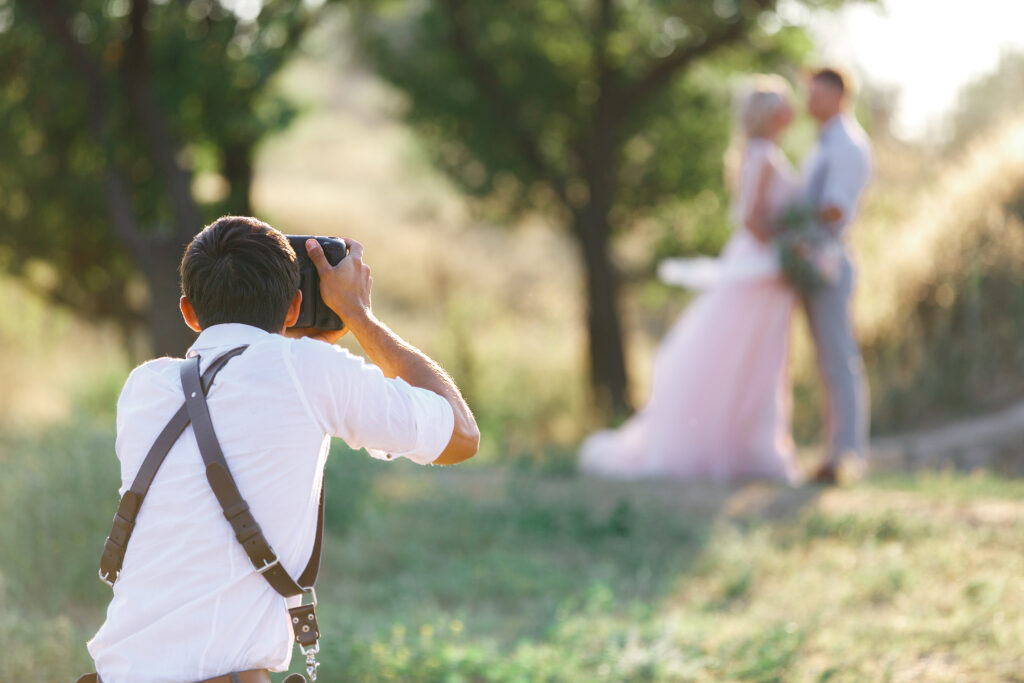
Now that you have a better understanding of the different photography styles, it’s time to consider the key factors that can help you select the best wedding photographer.
Choosing a wedding photographer is one of the most important decisions you’ll make while planning your special day. The right photographer will capture the essence and emotions of your wedding, creating timeless memories that you can cherish for a lifetime.
To ensure you make the best choice, here are some additional factors to consider:
Experience and Expertise
When it comes to capturing the most significant day of your life, experience matters. Look for a photographer who specializes in weddings and has ample experience shooting in various settings and lighting conditions.
An experienced wedding photographer will have the skills and knowledge to handle any situation that may arise during your big day. They will know how to capture the perfect shot, whether it’s in a dimly lit church or under the bright sun at an outdoor ceremony.
Their expertise will ensure that every moment is beautifully documented, from the exchanging of vows to the first dance.
Personality and Professionalism
Your wedding photographer will be by your side for a significant portion of the day, so it’s crucial to find someone whose personality meshes well with yours. Additionally, professionalism, reliability, and clear communication are vital traits to consider.
A photographer with a warm and friendly personality will help you feel comfortable and at ease, allowing you to be yourself in front of the camera. They will be able to capture genuine moments and emotions, resulting in photographs that truly reflect your love and happiness on your wedding day.
Professionalism is also key when choosing a wedding photographer. They should be punctual, well-prepared, and attentive to your needs. They should have a clear understanding of your vision and be able to execute it flawlessly.
Clear communication is essential to ensure that your photographer understands your expectations and can deliver the images you’ve always dreamed of.
Budget Considerations
Wedding photography costs can vary significantly, so it’s essential to establish a budget early on. Remember that wedding photography is an investment, and allocating a reasonable portion of your budget to it will ensure you receive high-quality images that will last a lifetime.
When setting your budget, consider the level of expertise and experience you desire in a photographer. Keep in mind that a skilled professional will often come with a higher price tag, but the investment will be worth it for the stunning photographs you’ll receive.
It’s also important to factor in additional costs such as prints, albums, and any extra services you may require. Don’t be afraid to reach out to multiple photographers and ask for quotes. This will give you a better idea of the average cost in your area and help you make an informed decision.
By considering these additional factors, you’ll be well-equipped to choose the perfect wedding photographer who will capture the magic and beauty of your special day.
Navigating Wedding Photography Packages
Once you have shortlisted photographers that meet your style preferences and budget, it’s important to understand their package offerings.
What's Included in a Photography Package?
Most wedding photography packages include coverage on the wedding day, a specific number of edited images, and a mix of digital and physical copies. Some packages may also include engagement photoshoots or additional hours of coverage.
Customizing Your Package
If a photographer’s standard package doesn’t perfectly match your needs, don’t hesitate to discuss customization options. Many photographers are willing to tailor their packages to ensure you receive exactly what you want.
Making the Most of Your Wedding Photography

Now that you’ve chosen your wedding photographer, it’s time to maximize the value of their services and make the most out of your wedding photography experience.
Pre-Wedding Photoshoots
Consider scheduling a pre-wedding photoshoot. It’s an excellent opportunity to get to know your photographer better, become comfortable in front of the camera, and create some stunning images prior to your wedding day.
Day-of Wedding Photography Tips
On your wedding day, make sure to allocate sufficient time for photography. Discuss your timeline with your photographer to ensure that you have ample opportunities for photographs throughout the day. Remember to relax, be present in the moment, and trust your photographer’s vision.
By understanding the importance of a wedding photographer, defining your preferred style, considering key factors, and maximizing your photography experience, you can ensure that selecting the best wedding photographer becomes an enjoyable and rewarding part of your wedding planning process.
Your wedding photos will serve as a cherished reminder of your special day and the love shared between you and your partner.
FAQs
Q1. What are the different photography styles that wedding photographers often specialize in?
Styles include traditional, photojournalistic, fine art, and editorial. Understanding these styles and preferences can guide your selection of the right photographer.
Q2. Why is it crucial to review a photographer’s portfolio before making a decision?
Reviewing their portfolio allows couples to assess the photographer’s style, skill, creativity, and consistency in capturing special moments, helping determine if their work aligns with the couple’s vision.
Q3. What role do personality and rapport play in choosing a wedding photographer?
A photographer will be by your side throughout the day. Ensuring a good connection and comfort with the photographer’s personality can make the experience more enjoyable and authentic in capturing moments.
Q4. What should be included in the contract when hiring a wedding photographer?
A contract should cover the event date, the photographer’s services, the deliverables, costs, cancellation policies, rights to images, and details regarding album production or digital copies.
Q5. What contingency plans should be considered with the photographer for unexpected situations on the wedding day?
Ensure the photographer has backup equipment and a plan in case of unforeseen circumstances, such as illness or emergencies, to ensure your day is covered.
